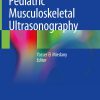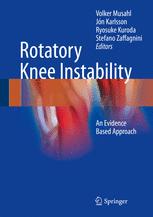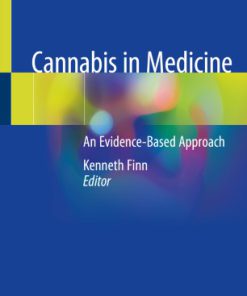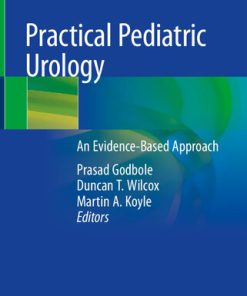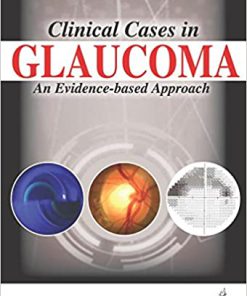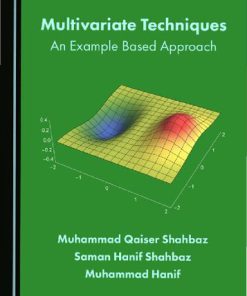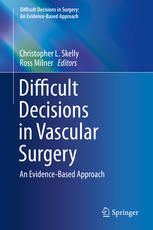Hiatal Hernia Surgery An Evidence Based Approach 1st Edition by Muhammad Ashraf Memon 3319640037 9783319640037
$50.00 Original price was: $50.00.$25.00Current price is: $25.00.
Hiatal Hernia Surgery: An Evidence Based Approach 1st Edition by Muhammad Ashraf Memon – Ebook PDF Instant Download/DeliveryISBN: 3319640037, 9783319640037
Full download Hiatal Hernia Surgery: An Evidence Based Approach 1st Edition after payment.
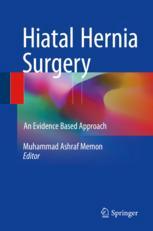
Product details:
ISBN-10 : 3319640037
ISBN-13 : 9783319640037
Author: Muhammad Ashraf Memon
This book aims to address the recent advances and controversies on the subject of hiatus hernia and antireflux surgery. The field of antireflux surgery is undergoing a lot of changes, and traditional concepts are being challenged. The readers are provided with an evidence based approach to assist surgeons’ decisions in developing a preoperative investigative algorithm prior to offering a surgical solution for either primary or recurrent hiatal hernia surgery based on supporting evidence. The chapters will further investigate the latest trends in minimally invasive hiatal hernia and antireflux surgery, both for primary and recurrent hernias.
Hiatal Hernia Surgery: An Evidence Based Approach 1st Table of contents:
Chapter 1: Utility of Endoscopy in the Diagnosis of Hiatus Hernia and Correlation with GERD
1.1 Introduction
1.2 Risk Factors
1.3 Classification
1.4 Endoscopy in the Evaluation of Hiatal Hernia and GERD
1.5 Endoscopic Assessment of Hiatal Hernia
1.6 Endoscopic Evaluation of the Esophageal Mucosa
1.6.1 Esophagitis
1.6.2 Barrett Esophagus
1.6.3 Esophageal Neoplasia
1.6.4 Esophageal Peptic Stricture
1.7 Intraoperative Evaluation of Newly Constructed Fundoplications
1.7.1 Perforation
1.7.2 Fundoplication Construction
1.8 Endoscopic Evaluation of Postoperative Adverse Events
1.8.1 Perforation
1.8.2 Tight Fundoplication
1.8.3 Disrupted/Loose Fundoplication
1.8.4 Slipped Fundoplication
1.8.5 Recurrent Hiatal Hernia
1.8.6 Twisted or Malconstructed Fundoplication
1.9 Conclusions
References
Chapter 2: The Role of MRI in GERD
2.1 Summary
2.2 Impact of MRI in Diagnosing GERD
2.3 The Role of MRI in Patients After Fundoplication
2.4 Summary
References
Chapter 3: Utility of Ambulatory Esophageal pH and High-Resolution Manometry in the Diagnosis of
3.1 Introduction
3.2 EGJ Anatomy
3.3 EGJ Function
3.4 Mechanism of Reflux
3.4.1 Motility and Reflux
3.4.2 Obesity and Reflux
3.4.3 Hiatus Hernia
3.5 Hiatus Hernia: Diagnosis
3.6 EGJ Measurement
3.7 Ambulatory Reflux Monitoring
3.8 Impact of Esophageal Function Testing on Management and Outcome
3.9 Anti-Reflux Surgery
3.10 Summary
References
Chapter 4: Preoperative Diagnostic Workup for GERD and Hiatal Hernia: An Evidence and Experience
4.1 Diagnostic Workup for GERD
4.1.1 Confirmation of the Diagnosis
4.1.2 Confirming GERD
4.1.2.1 Mucosal Breaks
4.1.2.2 Barrett’s Esophagus
4.1.2.3 Contrast Esophagrams
4.1.3 Catheter-Based pH Monitoring
4.1.4 Wireless pH Monitoring
4.1.5 Duration of pH Monitoring
4.1.6 pH Electrode Placement
4.1.7 Interpretation of Esophageal pH Studies
4.1.8 Symptoms Association
4.1.9 pH testing On- versus Off-Acid Suppressive Medication
4.1.10 Limitations of Esophageal pH Monitoring
4.1.11 Proximal Esophageal pH Assessment
4.1.12 Multichannel Intraluminal Impedance
4.1.13 Combined Multichannel Intraluminal Impedance and pH
4.1.14 Other Preoperative Tests
4.2 Diagnostic Workup for Hiatal Hernia
4.2.1 Preoperative Diagnostic Workup for Paraesophageal Hernias
4.2.1.1 Diagnosis of the Hernia
4.2.1.2 Evaluation of Function
References
Chapter 5: Indications and Procedures for Surgical Therapy of GERD with Hiatal Hernia
5.1 Introduction
5.2 Pathophysiology of GERD
5.3 Clinical Presentation
5.3.1 Atypical Symptoms
5.3.2 Dysphagia
5.4 Preoperative Work-Up
5.4.1 pH Monitoring
5.4.2 Esophageal Manometry
5.4.3 Esophagogastroduodenoscopy
5.4.4 Barium Esophagram
5.4.5 Impedance Testing
5.5 Additional Preoperative Considerations
5.5.1 Obesity
5.5.2 Partial Versus Complete Fundoplication
5.5.3 Barrett’s Esophagus
5.6 Surgical Management
5.7 Operative Technique
5.7.1 Creation of a Nissen Fundoplication
5.7.2 Creation of a Partial Fundoplication
5.7.3 Assessment of Esophageal Length
5.8 Postoperative Care
5.9 Operative Complications and Side Effects
5.9.1 Pneumothorax
5.9.2 Gastric and Esophageal Injuries
5.9.3 Splenic Injury or Bleeding
5.9.4 Bloating
5.9.5 Dysphagia
5.10 Conclusion
References
Chapter 6: Anterior Versus Posterior Fundoplication, Are They Equal?
6.1 Introduction
6.2 Preoperative Evaluation
6.3 Partial Anterior Fundoplication Technique
6.4 Posterior Partial Fundoplication Technique
6.5 Posterior Complete Fundoplication Technique
6.6 Medical Management Versus Surgery
6.7 Durability of Fundoplication Long-Term
6.8 Dysphagia Side Effects
6.9 Bloating and Wind-Related Side Effects
6.10 Control of Reflux Symptoms
6.11 Conclusions
References
Chapter 7: Novel Endoscopic Antireflux Procedures: Do They Have a Role in Patients with Hiatus He
7.1 Introduction
7.2 Precision GERD Management
7.2.1 GERD Validation
7.2.2 Hiatal Hernia Assessment
7.2.3 Esophageal Structure and Function
7.2.4 Prior Therapies
7.2.5 Obesity
7.2.6 Extra-Esophageal Symptoms
7.3 Endoscopic Anti-Reflux Therapies (EART)
7.3.1 Radiofrequency Treatment of the EGJ (Stretta)
7.3.2 Transoral Fundoplication (TF)
7.3.3 MUSE
7.3.4 Anti-Reflux Mucosectomy (ARMS)
7.4 Conclusions
References
Chapter 8: Magnetic Sphincter Augmentation for Symptomatic Small Hiatus Hernia
8.1 Biomechanics of Magnetic Sphincter Augmentation
8.2 Operative Technique and Perioperative Management
8.3 Synopsis of Clinical Experience
8.4 Role of Magnetic Sphincter Augmentation in Hiatus Hernia
8.5 Conclusions
References
Chapter 9: Laparoscopic Repair of Paraesophageal Hiatus Hernia: Suture Cruroplasty or Prosthetic R
9.1 Introduction
9.2 Epidemiology
9.3 Patient Selection and Indications for PHH Repair
9.4 Diagnostic Evaluation
9.5 Basic Principles for Laparoscopic Repair PHH
9.6 Prosthetic Material Versus Sutures for Repair of PHH
9.7 Mesh Complications
9.7.1 Mesh Erosion
9.7.2 Mesh Related Fibrosis
9.7.3 Recurrence
9.7.4 Reoperation
9.7.5 Dysphagia
9.8 Conclusions
References
Chapter 10: Lower Esophageal Sphincter Efficacy Following Laparoscopic Antireflux Surgery with Hiat
10.1 Introduction
10.2 Anatomy of the EGJ
10.3 Physiology of Esophago-Gastric Junction with Focus on LES Efficacy
10.4 Laparoscopic Antireflux Surgery with Hiatal Repair Surgical Aspects
10.5 Recurrence of GERD and Hiatal Hernia Clinical Features
10.5.1 Clinical Features and Fundoplication Failures
10.5.2 Role of Fluoroscopy
10.5.3 Role of High-Resolution Impedance-Manometry
10.5.4 Role of the Functional Luminal Imaging Probe
10.6 Conclusions and Perspectives
References
Chapter 11: Adverse Outcome and Failure Following Laparoscopic Anti-reflux Surgery for Hiatal Hern
11.1 Introduction
11.2 Laparoscopic Anti-reflux Surgery Failure
11.2.1 Indications
11.2.2 Preoperative Workup
11.2.3 Is One Fundoplication Better than Another?
11.3 Conclusions
References
Chapter 12: Post-operative HRIM and FLIP for Dysphagia Following Antireflux Procedures
12.1 Introduction
12.2 Algorithm: Evaluation of Dysphagia After an Antireflux Procedure
12.3 High-Resolution Impedance Manometry (HRIM)
12.3.1 HRIM Study Protocol
12.3.2 HRIM Interpretation
12.3.2.1 Individual High-Resolution Manometry Metrics
12.3.2.2 Basal EGJ and Upper Esophageal Sphincter Assessment
12.3.2.3 Deglutitive LES Relaxation
12.3.2.4 Distal Latency
12.3.2.5 Peristaltic Vigor
12.3.2.6 Peristaltic Integrity
12.3.2.7 Pressurization Pattern
12.3.2.8 Individual Impedance Based Metrics
Bolus Flow Time
Measures of Bolus Residual/Retention
12.3.2.9 Pressure-Flow Measures of Distension Pressure, Flow Timing and Bolus Pressurization
12.3.3 The Utilization of Pressure Flow Metrics in the Analysis of Post-fundoplication Dysphagia
12.4 Functional Lumen Imaging Probe (Flip)
12.4.1 FLIP: Protocol
12.4.2 FLIP Analysis
12.5 Conclusions
References
Chapter 13: Preoperative Assessment of Failed Fundoplication with Recurrent Hiatal Hernia
13.1 Definition and Anatomy
13.2 Pathophysiology
13.3 Clinical Presentation
13.4 Radiologic Studies
13.5 Upper Gastrointestinal Endoscopy
13.6 High Resolution Manometry
13.7 Esophageal pH Monitoring
13.8 Assessment Under Urgent Conditions
13.9 Decision Making
References
Chapter 14: Recurrent GERD After a Fundoplication: Failure or Wrong Procedure
14.1 What Is a Failed Fundoplication?
14.2 How to Evaluate a Dissatisfied (“Failed”) Fundoplication Patient?
14.2.1 Patient History
14.2.2 Diagnostic Tests
14.3 How to Classify Failed Fundoplication?
14.4 Causes of Failed Fundoplication
14.4.1 Poor Patient Selection
14.4.2 Improper Surgical Technique
14.4.3 Inadequate Patient Counseling
14.4.4 Fundoplication/Hiatus Disruption
14.4.5 Patient Body Habitus
14.5 Conclusions
References
Chapter 15: Management of Recurrent Paraesophageal Hernia
15.1 Introduction
15.2 Clinical Presentation
15.3 Evaluation
15.4 Surgical Planning
15.5 Technical Considerations
15.6 Post Operative Care
15.7 Conclusion
Appendix
References
Chapter 16: Revision Strategies for Recurrent Paraesophageal Hiatal Hernia
16.1 Introduction
16.2 Causes of Failure
16.2.1 Radial and Axial Tension
16.2.2 Technical Issues
16.2.3 Patient Factors
16.2.4 Classification of Failures
16.3 Identifying Recurrence After Hiatal Hernia Repair
16.3.1 When to Operate
16.4 Surgical Strategies
16.4.1 Preparation
16.4.2 Exposure/Dissect3ion
16.4.3 Crural Closure
16.4.4 Intra-operative Endoscopy
16.4.5 Short Esophagus
16.4.6 Fundoplication
16.4.7 Gastropexy/Gastrostomy Tube
16.4.8 Conversion to Roux-en-Y Bypass
16.4.9 Conversion to Open
16.4.10 Post-operative Considerations
16.4.11 Long-Term Post-operative Care
16.5 Summary
References
Chapter 17: Long-Term Results After Laparoscopic Reoperation for Failed Antireflux Procedure
17.1 Introduction
17.2 Pattern of Failure and Surgical Procedures
17.3 Reoperation Techniques
17.4 Intraoperative Complications and Postoperative Outcomes
17.5 Long-Term Outcomes
17.6 Conclusions
References
Chapter 18: Utility of the Robot in Revisional Paraosophageal Hiatus Hernia
18.1 Introduction
18.2 Classification and Clinical Manifestations
18.3 Evolution of Operative Treatment
18.4 Da Vinci Surgical System
18.5 Surgical Repair of Paraesophagael Hernias
18.6 Failure of Primary Repair
18.7 Redo Paraesophageal Hernia Repair
18.8 Description of Redo Robot Assisted Laparoscopic Paraesophageal Herina Repair
18.9 Conclusion
References
Chapter 19: Quality of Life Following Laparoscopic Antireflux Surgery for Primary and Recurrent G
19.1 Introduction
19.2 Measuring the Effectiveness of Antireflux Surgery
19.3 The Impact of Gastroesophageal Reflux Disease on Patients Health Related Quality of Life (HR
19.4 The Impact of Laparoscopic Antireflux Surgery on Quality of Life in the Short and Medium
19.5 The Impact of Laparoscopic Fundoplication on Quality of Life in Partial Responders to PPI-
19.6 Impact of Antireflux Surgery on QoL in Patients with Non-erosive Reflux Disease (NERD)
19.7 The Impact of Laparoscopic Antireflux Surgery on Quality of Life in the Long Term (10 Year
19.8 The Impact of Redo Surgery for Failed Antireflux Operation on Quality of Life
19.9 Conclusion
People also search for Hiatal Hernia Surgery: An Evidence Based Approach 1st:
hiatal hernia surgery effectiveness
hiatal hernia surgery and gastric sleeve
hiatal hernia surgery barrett’s esophagus
hiatal hernia surgery and gastric bypass
hiatal hernia surgery requirements
Tags: Hernia Surgery, Evidence Based, Approach, Muhammad Ashraf Memon
You may also like…
Medicine - Pharmacology
Cannabis in Medicine An Evidence Based Approach Kenneth Finn
Medicine - Infectious diseases
Infectious Diseases An Evidence based Approach 1st edition by Vikas Mishra 1773618377 9781773618371
Medicine - Ophthalmology
Clinical Cases in Glaucoma An Evidence Based Approach 1st Edition Shibal Bhartiya
Education Studies & Teaching - School Education & Teaching
Education and Learning An Evidence based Approach 1st Edition Jane 1118728076 9781118728079
Engineering - Engineering Technology
Medicine
Difficult Decisions in Vascular Surgery An Evidence Based Approach 1st Edition Christopher L. Skelly



